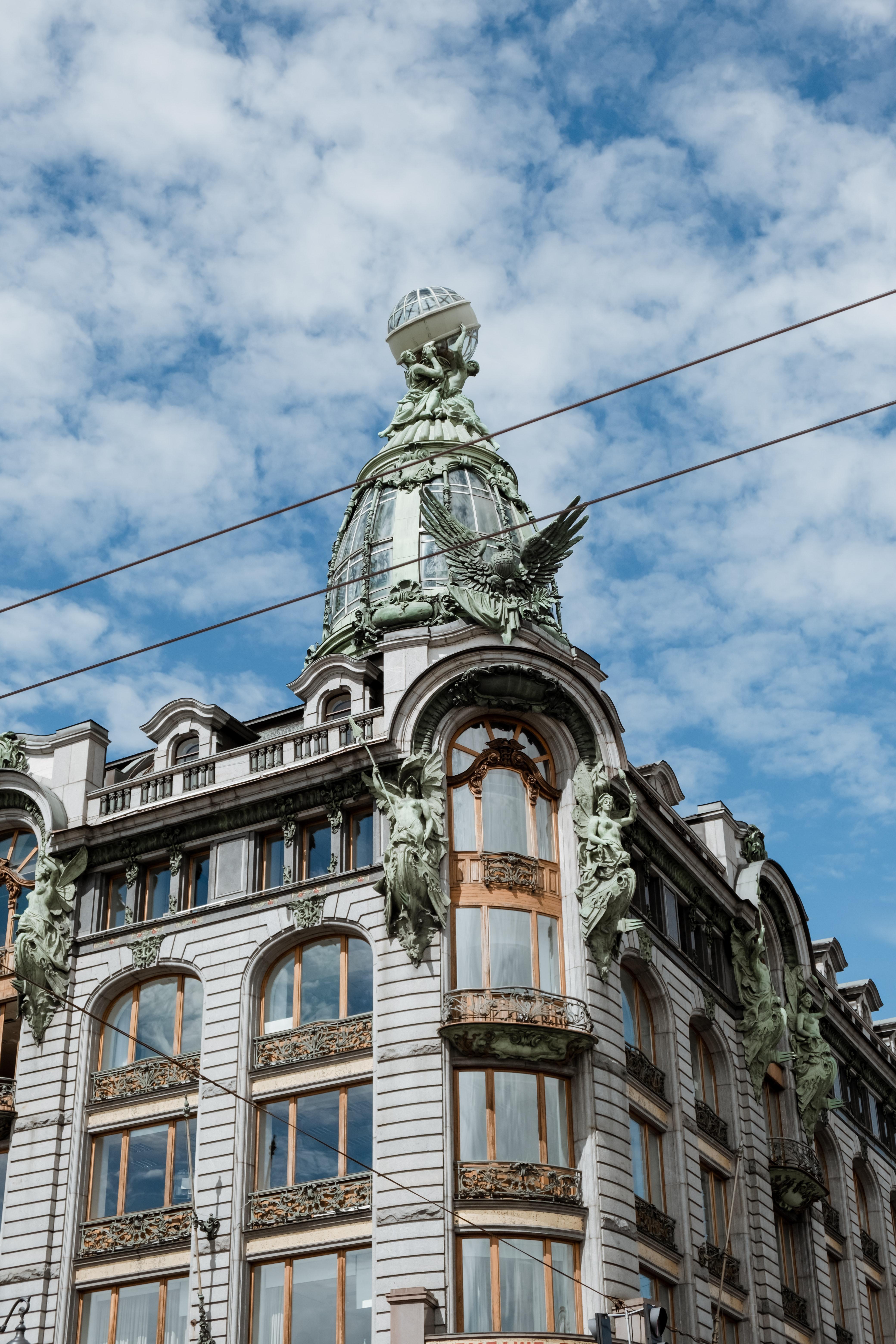What is Art Nouveau in Architecture?
Art Nouveau is a global style of painting, architecture, and applied art, particularly decorative arts. Art Nouveau aimed to establish a cohesive style that blurred the distinctions between architecture, interior design, furniture design, painting, and other disciplines. In Art Nouveau, architects would strive to produce a “full work.” These pieces were frequently quite coherent in design style and intricately crafted. The Art Nouveau building is distinguished by its romantic details, metalwork, and sculptural incorporation.
History of Art Nouveau
Art Nouveau Architecture is an ornamental style that emerged in Belgium and France in the 1890s and continued to gain popularity throughout Europe and the United States. The inspiration for moving to art nouveau was to break the design tradition which was followed at that time and explore new things, free forms of visual expression. It includes art, design, and architecture and had varieties of influences. It is characterized by its use of long, sinuous, and organic lines. The goal of Art Nouveau artists was modern art for the modern age because the world was changing and new things were explored. Art Nouveau architecture was succeeded by Art Deco Architecture and it also became a popular style that dominated in the 1920s.
Characteristics of Art Nouveau Architecture
- Use of asymmetrical shapes
- Use of curving forms inspired by lilies, vines, and flower stems
- It also focused on patterns based on insects like butterflies and dragonflies.
- Inspiration is taken from nature—insects, birds, plants, etc.
- Use of curving lines and forms generated from geometric forms like cubes and polygons
- Use of natural light by opening the interior space, removing walls, and creating holes by using skylights These help in providing maximum light to the interior spaces. [2]
- Use of organic shapes, arches, curving lines, and sensual ornamentation.
- Buildings have featured natural colors like brown, yellow, blue, and green.
- Use of wrought iron, curved and stained glass.
- It is different in appearance and decoration
Different forms of Art Nouveau Architecture
- Art Nouveau Furniture
- Art Nouveau Graphic Arts and Posters
- Art Nouveau Paintings
- Art Nouveau Glass Art
- Art Nouveau Metal Art
- Art Nouveau Jewelry
- Art Nouveau Ornamentation (mainly for buildings)
- Art Nouveau Sculpture
- Art Nouveau Ceramic
- Art Nouveau Wallpaper Art [2]
Cities that have Art Nouveau-inspired buildings
Riga, Brussels, Paris, Barcelona, Austria, Scotland [1], Romania, Prague, Germany, Britain, Belgium, Serbia, Spain, Portugal, Argentina, and others [2]
Detailed information about the art nouveau architecture in these cities will be added in the coming days.

Characteristics of Art Nouveau in Architecture
- Use of asymmetrical shapes
- Inspirations taken from nature, insects, birds, plants etc.
- Use of organic shapes, arches, curving lines, and sensual ornamentation.
- Buildings have featured natural colors like brown, yellow, blue, and green.
- Use of wrought iron, curved and stained glass.
- It is different in appearance and decoration.
Examples of Art Nouveau Inspired Buildings
- Maison Saint-Cyr, Belgium
- Secession building, Vienna
- Casa Amatller, Barcelona
- Majolikahaus of Otto Wagner, Austria
- Castel beranger, Paris
- Casa Battlò, Barcelona
Case Study of an Art Nouveau-Inspired Building
Case Study of Casa Batllo, Barcelona: Art Nouveau
General Information
Location:- Barcelona, Spain
Architect:- Antoni Gaudi
Built-in:- 1906
Architectural Style:- Art Nouveau
Materials:- Stone, Metal, Wood, Ceramic, and Colours
Casa Batllo is located in Barcelona, and it is its center of attraction. Because of it, many people around the world visit this place and experience the beauty of the Art Nouveau style. UNESCO designated Casa Batllo as a World Heritage Site in 2005.
Locally, this building is known as “Casa dels Ossos” (House of Bones). This structure was given this name due to its visceral skeletal organic quantity. [3] This structure is a synthesis of animal shapes, vine-like curves, skeleton parts, bones, and glazed ceramic with glass, which serves as a centerpiece and will astound the observers. [4]
Façade of Casa Batllo
The ground floor has unusual tracery, irregular oval-shaped windows, and flowing sculptured stonework. [3] Interest in his flowing shape, colors, and patterns can be seen on the exterior of Casa Batllo. [4] Most of the façade has been decorated with mosaics made with broken ceramic tiles.
The façade of this building is separated into three different sections. The lower part of the ground floor is connected to the main floor, and two first-floor galleries are connected with Montjuic sandstone in undulating lines. The middle part is decorated in multicolor and has beautiful balconies, and this section continues to the last floor. At last, the top of the building acts as a crown, which looks like a huge gable. [3]
Difference between Art Nouveau and Art Deco
| Art Nouveau | Art Deco | |
| Timeline | Late 1920 and early 1930 | Between 1890 and 1910 |
| Region | Throughout Europe and United States | Throughout Europe and United States |
| Style | More Polished | Organic Style |
| Features | Modern machine and technology | Emphasizes on nature and objects |
| Form (Ideas | Geometric lines, Sleek forms etc | Flower stalks, buds, vine tendrils, insect wings etc |











